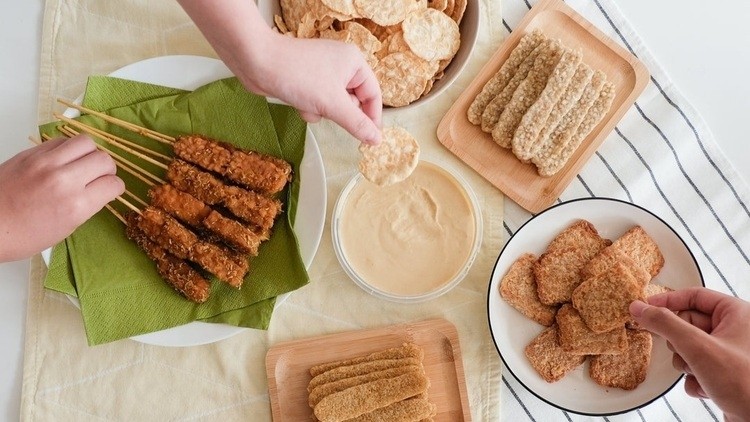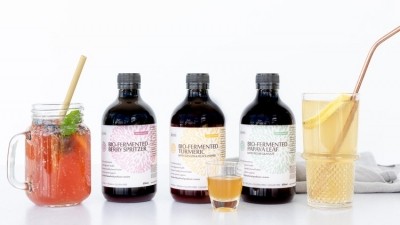Beyond vegans: How Singapore’s Angie’s Tempeh hopes to hit 10% of US$4.5bn global market

Armed with the two strategies in mind, the brand aims for a 10% slice of the global tempeh market estimated to be worth US$4.53bn. It is also simultaneously strategising its South East Asian market expansion by 2027.
Domestically, the brand seeks to enter major supermarkets with various convenience food such as ready-to-eat (RTE) chips and ready-to-cook (RTC) satay and nuggets by Q4 2023. Currently, consumers can only purchase the products through its e-commerce platform.
“We want to create a stronghold in Singapore first before expanding because there are no commercial tempeh manufacturers in Asia right now. The ones in Indonesia are small. The people make it by hand.
“We intend to scale for Asia and beyond as we believe we have the technical knowledge. We also want to make things interesting for the plant-based consumer as it is hard to find wholesome alternatives. The plant-based movement is still new to the mainstream market. Retailing such a product is hard,” said founder Angeline Leong.
Angie’s Tempeh was established in 2020 with raw, unflavoured tempeh. Tempeh is made by fermenting protein, usually soybeans, with a starter. The final product contains a soft white mass (the mycelium of the Rhizopus mould) that grows around the beans. The mycelium network holds the beans together to form a cake-like consistency. The product could be eaten raw, but it is recommended to be cooked gently, like steaming, boiling or pan-frying, to kill pathogens, bring out the flavours and maintain the nutrients.
Today, it has 11 tempeh-based SKUs manufactured in a 2,500 square feet facility in Food Xchange @ Admiralty (northern Singapore). In the facility, the brand produces innovative variations, such as tempeh made with azuki beans, quinoa, buckwheat, millet, barley and chickpea, and converting the tempeh into other forms like RTC nuggets and RTE chips.
In 2021, the brand’s revenue hit close to SG$1m (US$700,000), whereas 2022 would possibly witness it crossing the million-dollar mark.
Tempeh’s here to stay
Driven by the need to innovate and educate the audience on tempeh consumption, the team recently launched two SKUs – a novel, marinated RTC chickpea tempeh satay on skewers and barley-soybean raw tempeh.
The tempeh satay mimics the conventional meat skewers popular in South East Asia and is made with chickpeas. It is the brand’s first foray into RTC products. The next RTC product is mala-flavoured tempeh skewers, which are still in development.
“To ensure the satay’s authenticity, we sourced for appropriate ingredient suppliers and consulted satay makers at Singapore’s Lau Pa Sat food centre. We observed how they made the marinade and reverse engineered it to create our own from scratch. Our tempeh satay marinade contains ingredients like garlic, cumin and galangal. Large-scale production is not easy for tempeh satay,” said Leong, targeting to launch another five SKUs by end-2022.
According to Leong, the tempeh market is growing in light of the alternative protein segment boom. Despite the rise of alternative proteins using textured vegetable protein (TVP), consumers were uncomfortable eating ultra-processed food. However, the situation was different for tempeh as it has only three ingredients – the substrate, culture and water.
“Tempeh has been a staple for hundreds of years. People are more comfortable with minimally-processed food. If the future we are heading for is increasing sustainable ways of eating, it is important to address these concerns that people have. Our goal is to provide as many different sources of plant proteins as possible,” said Leong.
Protein, probiotics and healthy ageing are major focus areas of our upcoming Growth Asia Summit in Singapore from 11 to 13 October. Check out big-name brands, international experts and pioneering start-ups slated to present here.






















